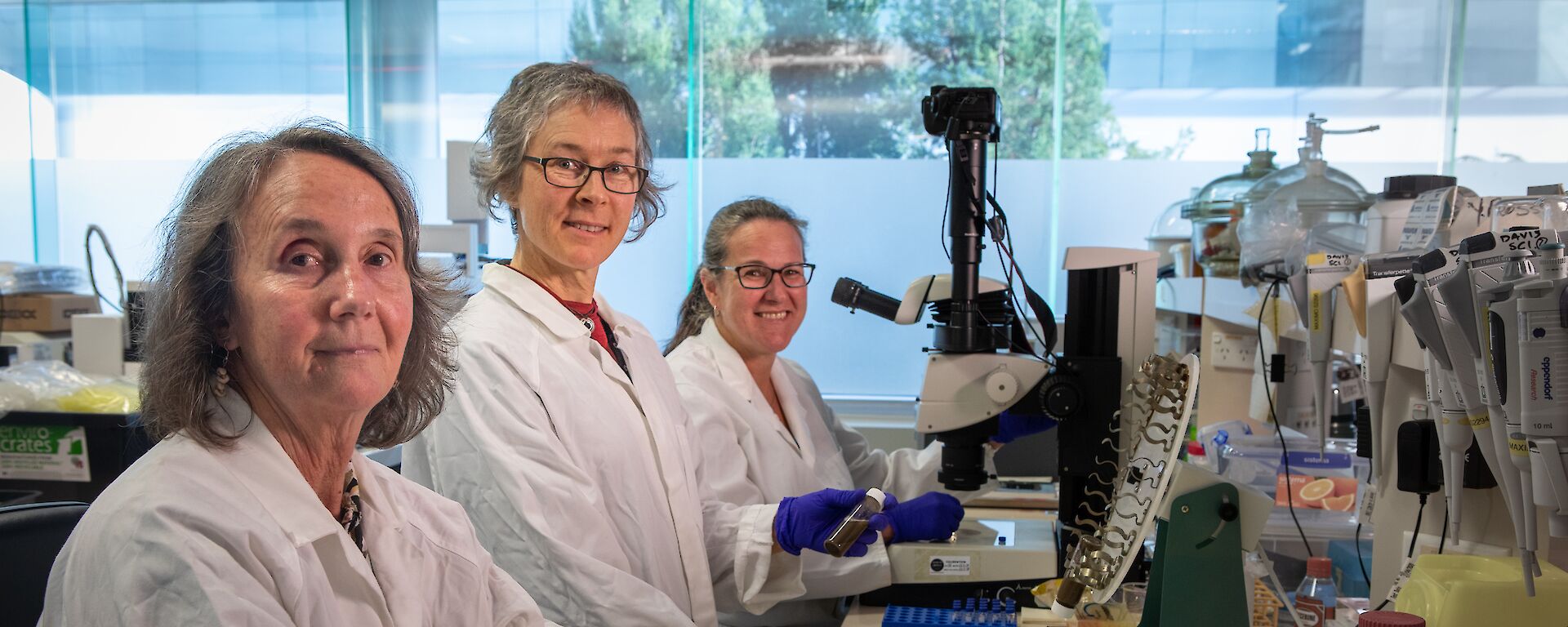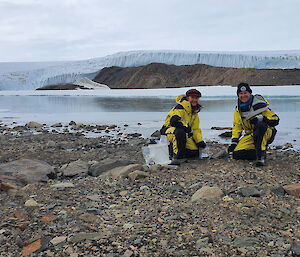“We need to know more about the effects of hydrocarbon contaminants in fuels on Antarctic terrestrial organisms, and how these change as fuel ages within soil,” Dr Brown said.
“Prior to this study, sensitivity estimates for Antarctic terrestrial species to fuel were limited to three moss species, an algae, and soil microbial processes.”
“This work provides the first estimate of the toxicity of diesel to Antarctic terrestrial fauna, and valuable information on the dynamics of fuel chemistry under Antarctic conditions.”
Life on the edge
Approximately 24,000 described species of nematodes live in nearly all marine, terrestrial and freshwater environments world-wide.
The native Antarctic nematode, Plectus murrayi, is commonly found in soils and mosses in the ice-free areas along the coast, where it feeds on bacteria.
“Around Casey research station you can find up to 4000 individual nematodes in one kilogram of dry soil,” Dr Brown said.
“We collect specimens of P. murrayi in Antarctica to establish cultures and grow thousands of them in our lab in Tasmania.”
The common Antarctic micro-invertebrate is largely restricted to sparse soils in the ice-free areas along the coast, the most biologically important places on the Antarctic continent, that cover only 0.44% of the total land area.
Antarctic ice-free areas are also where human activities are concentrated and the risk of fuel spills is greatest, predominantly around scientific research stations and associated infrastructure.
“Because these limited ice-free habitats are so important to both Antarctic biodiversity and human habitation, we should be especially careful to protect them,” Dr Brown said.
Toxic recipe
Samples of uncontaminated soil collected near Casey station were mixed with Special Antarctic Blend, the main diesel fuel used at Australian Antarctic stations.
They were then left to age for up to 45 weeks at 3°C, to represent multiple years of fuel breakdown under Antarctic summer conditions, which are typically above freezing for 6 to 8 weeks per year.
Samples of spiked soil at different ages were washed to create elutriates, and diluted to produce solutions of different diesel concentrations which were analysed for their composition.
Elutriates were added to vials containing juvenile nematodes, and their survival over the next 28 days scored under a stereo microscope.
Clues to cleaning up
Nematodes were most sensitive to elutriates made from freshly spiked soils, with a subsequent decline in toxicity observed in the first six weeks of laboratory ageing.
Toxic effects were still evident up to 45 weeks, despite hydrocarbons gradually being depleted from soils as they aged through natural microbial degradation processes.
“This study demonstrates the need for toxicity tests that are specifically designed for, and use Antarctic species,” Dr Brown said.
“We also need to understand chemical degradation that occurs under cold conditions, and its influence on toxicity.”
As part of the AAD’s Cleaner Antarctica science project, the findings will help predict ecological risk at existing diesel fuel spill sites in Antarctica, set up site-specific targets for remediating fuel contamination, and assess ecosystem health.
The research is published in Ecotoxicology and Environmental Safety today.
Related story: Cultured worms assist clean-up of contaminated Antarctic sites



